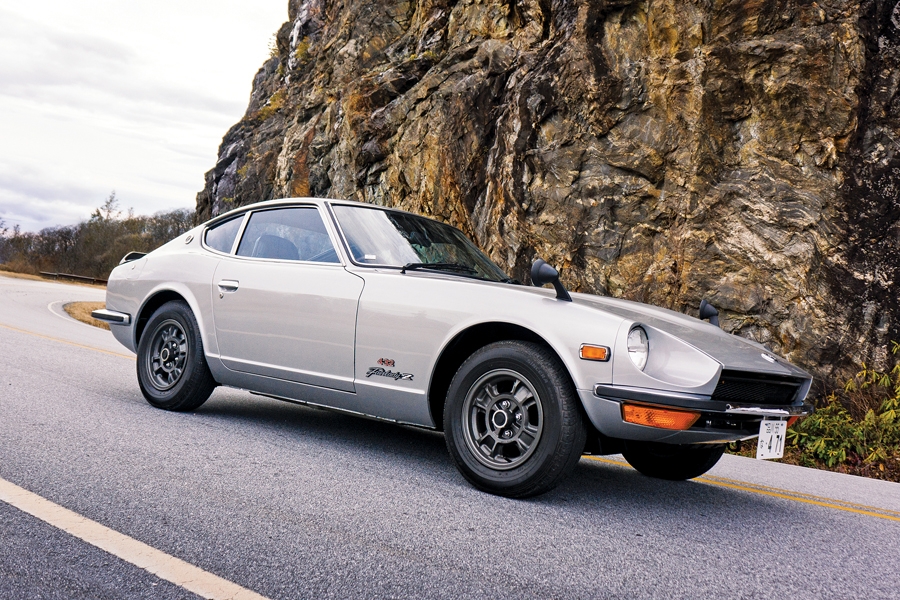In the late 1960s, Nissan began development of a closed sports car to replace their popular Datsun 1600 and 2000 roadsters. Under the direction of Yutaka Katayama, the president of the Nissan Motor Corporation in the U.S. (known as “Mr. K” and the “Father of the Z-car”), renowned German designer Albrecht von Goertz was hired as a consultant on the project. He and the Nissan styling staff would develop the initial design, while Yamaha would engineer the drivetrain and build the prototype. Ultimately, Nissan and Yamaha didn’t come to terms, and the project was temporarily shelved.
Undeterred, Nissan continued to develop the new car in-house. Chief Designer Yoshihiko Matsuo, along with Assistant Designer Akio Yoshido and their team, created the car we know today as the 240Z. It was introduced in October 1969 and was an immediate success, as it offered striking styling, strong performance and exceptional build quality — all at an affordable price.
Although the Datsun 240Z was targeted primarily at the American audience, Nissan produced an exceptional version of the Fairlady Z strictly for their domestic market. Since their merger with Prince, Nissan had developed their formidable S20 straight six into a competition colossus, culminating with the launch of the indomitable Skyline GT-R. This is the same race-derived drivetrain, with the upgraded close-ratio 5-speed gearbox and heavy-duty limited-slip differential that would be fitted in the Z-car, creating the ultimate production variant, the Fairlady Z 432.
The Z 432 offered here is possibly one of the finest examples to come out of Japan. It is incredibly rare, as only 420 total examples were produced, with many having met their fates on the racing circuit or having been heavily modified over the years. Therefore, any highly original car such as this is rarer yet, as well as highly sought after, as few are seldom found outside of their homeland.
This car was imported from Japan in 2013 and had been acquired, incredibly, from its first and only owner. At the time, the Nissan was still registered on its original Shinagawa license plates from September 1970. Save for one repaint in its original color, it has never been taken apart, and it remains in remarkably original condition throughout. Everything continues to function as it did when it left the factory, including the original radio, clock and heater. Additionally, the car includes its original Nissan tool roll, spare tire and footwell flashlight, and it also features the optional rear spoiler and desirable factory magnesium wheels.
An RM Sotheby’s specialist, himself very familiar with these cars, has test-driven this Z 432 and reports that this willing, high-revving machine provided a thrilling ride. The solid feel of an excellent, unrestored car cannot be overstated, but the bottom line, as he relates, is that “it runs like a scalded cat!”
As with the Hakosuka GT-R, the Z 432 is a legend at home, and it has a growing following amongst enthusiasts in the West. Despite its recognizable good looks, this limited-production, high-performance car should never be confused with a Datsun 240Z. This is the “holy grail” of all Z-machines, and as such, the opportunity to acquire an example as wonderful as this is unlikely to be repeated any time soon.

